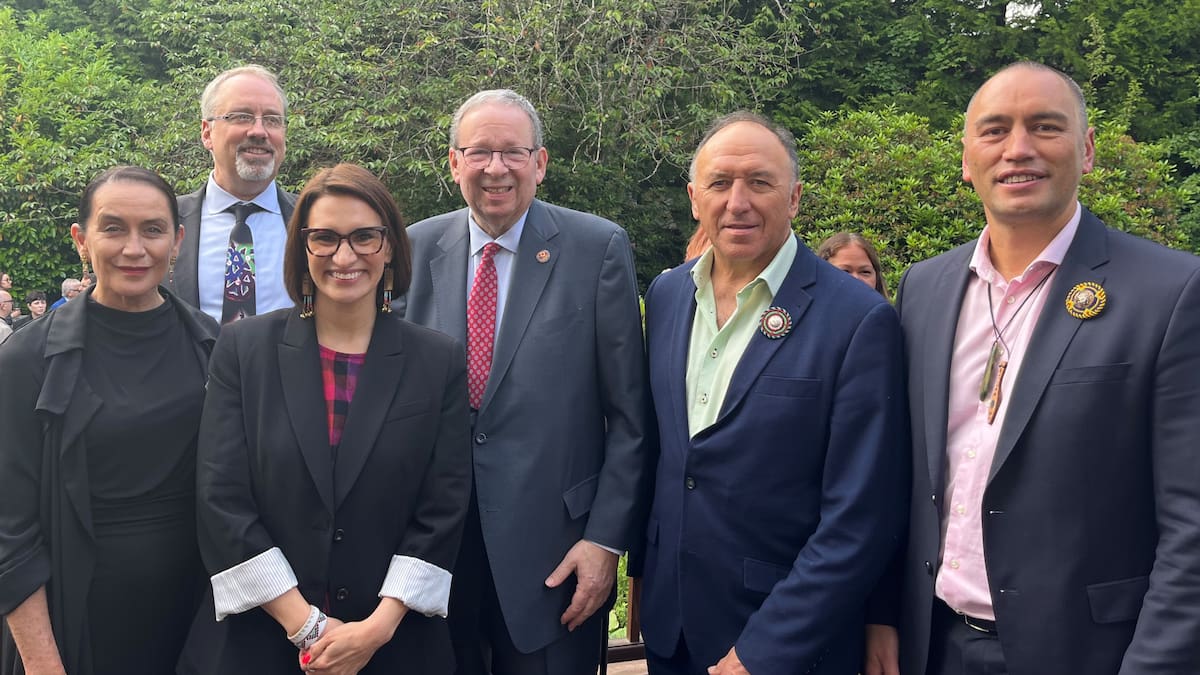Tipene and Federation of Māori Authorities leader Traci Houpapa are the Indigenous co-chairmen, while the Ministry of Foreign Affairs and Trade’s Tāne Waetford represents the Government as co-chairman.
With New Zealand leading the arrangement, Canada, Australia and Taiwan have joined as founding members, Tipene said.
The United States now has observer status, while Chile, Peru and Mexico have shown interest in joining.
Some other Governments are loathe to join the agreement, due to contentious arrangements with their own Indigenous people, Tipene said.
But he was able to witness the trailblazing nature of Ipetca firsthand last month, with a face-to-face forum in Vancouver.
“It was the first time that Canadian Indigenous people had met with Indigenous people from the US, which was really surprising because they are only just across the border: It was really, really important.”
The Vancouver meeting was immediately followed by a meeting in Washington DC.
Tipene, who is a Ngāti Hine leader and chairman of the Waitangi National Trust, was able to meet with leaders such as US ambassador to Canada David Cohen, Hawaii senior senator and Senate Committee on Indian Affairs chairman Brian Schatz, US treasurer and Mohegan chief Lynn Malerba – also known as Chief Mutáwi Mutáhash or “Many Hearts” – and Canadian Minister of Export Promotion, International Trade and Economic Development Mary Ng.

New Zealand leading the way with indigenous relations
Traci Houpapa believed New Zealand was the only country capable of leading Ipetca, because it had a unique, treaty-based partnership between its indigenous people and Government – Te Tiriti o Waitangi.
“Aotearoa New Zealand has succeeded, and will continue to succeed, on the world stage because Te Tiriti o Waitangi provides us with a partnership framework which ensures that people are recognised and mana whenua are supported alongside government to deliver what is best for our country.
“I think the fact that some people are only just starting to understand the benefit or importance of the treaty is, in part, disappointing but, in whole, an opportunity to do better.”
The need for Ipetca was shown by the size of the indigenous economy, which covers 476 million people – 70% of whom live in Asia-Pacific, Houpapa said.
In New Zealand, Māori have previously been viewed as a drain on the economy but are now being recognised as industry leaders, she said.
“Māori tribal groups or land corporations and trusts own 50% of fisheries, 40% of forestry, 35% of red meat and dairy, 30% of lamb and 10% of renewable energy – the numbers in itself show Māori economic development and turnover are critical for Aotearoa.”
Alongside this, customers are starting to demand more sustainable and ethical business practices and this is also key for Indigenous people, Houpapa said.
Ipetca now has a work plan to ensure it continues moving forward, with virtual meetings every two months, to bring results to the people, Tipene said.
“It’s really got to matter for the people back in the valleys – if it doesn’t, we’re really not doing our job.”
Tipene will travel to Taipei next month to meet with Taiwanese leaders, and Ipetca would next meet in person in August during the Apec forum in Peru.
Denise Piper is a news reporter for the Northern Advocate, focusing on health and business. She has more than 20 years in journalism and is passionate about covering stories that make a difference.



